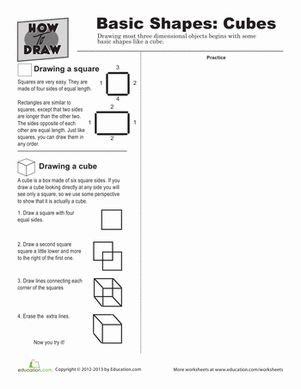Science project
How to use Colored Filters to Send Secret Messages
Have you ever wondered why objects have different colors? Have you also ever wondered what it would be like to work as a secret agent and send secret messages to people? Conduct this experiment to find out.
Problem
Discover what colored filters do to light.
Materials
- Red filter (Red cellophane wrap works)
- Shoebox lid
- Markers or crayons
- White paper (several sheets)
- Tape
- Scissors
Procedure
- Cut out a hole in your shoebox lid and tape the red filter over it so that the filter covers the entire hole. Make sure your hole is big enough to let you see a sheet of paper through it.
- Take a sheet of white paper and draw on it using several colors. It might be interesting to draw a band of colors where each individual color appears in the same sequence it would appear in the rainbow.
- Look at the paper through your shoebox filter. What happens to each color?
- Next to each color, make a note describing what it looked like under the red filter.
- On a new sheet of paper, write your secret message. It could be directions to treasure, a secret you want to share with someone special, or anything you like. You will want to use a color you know you can see through the filter.
- Take the colors that disappeared when you used your filter and scribble all over your message. Don’t fill it in solid, but try to make it as hard for an observer to see your message as possible.
- Look at your message using your filter. Can you read it?
Results
When you look at your paper through your filter, some of the colors will disappear. The colors that disappear would be located next to each other if you were to try to find those colors in the rainbow. If you used blue, green to write your message, you should have seen the message as black or brown when you observed it through your filter. If you weren’t able to see your message, you may not have written it using the correct color, or maybe you scribbled over your message with colors that appear black when viewed through your filter.
Why?
Color is a special property of light that we can detect because our eyes have pigments in them that absorb color. These pigments tell your brain that they detect those colors. All the colors you can see are due to our brain detecting different combinations of red, blue, and green light, and when you see the color white, you‘re seeing all three of these colors blended together.
When light is emitted from something, like a television or a computer screen, we detect different combinations of colors added together: all three colors added together gives you white, and combinations of two colors make new colors like yellow, cyan, and magenta. Those colors are called additive secondary colors and only appear when two additive primary colors (red, blue, or green) are added together. Combining different levels of the three primary colors can produce any visible color. That’s how computer and television screens create images.
Another kind of light is reflected light, or light that bounces off of something. Colors from reflected light are called subtractive colors because the color you see is the result of certain colors getting subtracted through absorption. Objects absorb or reflect certain colors of light depending on their physical chemistry. White paper reflects all colors well—that’s why it’s white! Ink from markers or crayon wax reflects only one color or a limited combination of colors. The subtractive primary colors are magenta, cyan, and yellow. The subtractive secondary colors are red, blue and green.
Red marker ink absorbs blue and green light, but allows red to reflect off of your paper and get picked up by your eyes. Like ink, your red filter also absorbs blue and green light. When you look at your paper through your red filter, the paper looks red because the filter only lets red through. When you marked with your blue or green colors, however, the ink absorbs the color red. No red light is absorbed by the filter, so you can see those colors through the filter relatively unchanged.
The reason that wet marker tips appear dark is because ink on its own doesn’t reflect light very well—it absorbs. If you’ve ever tried to use a marker on a dark material, you’ve seen this in action. Markers are great for use on overhead projectors, though, since they will transmit the light of their color. Unlike markers, wax from crayons or colored pencils reflects light of its color and absorbs everything else—this is why you can easily tell what color a colored pencil is by looking at its tip.
Try exploring the world while looking through your filter—you might notice some neat things! The sky is a great place to start.
Education.com provides the Science Fair Project Ideas for informational purposes only. Education.com does not make any guarantee or representation regarding the Science Fair Project Ideas and is not responsible or liable for any loss or damage, directly or indirectly, caused by your use of such information. By accessing the Science Fair Project Ideas, you waive and renounce any claims against Education.com that arise thereof. In addition, your access to Education.com's website and Science Fair Project Ideas is covered by Education.com's Privacy Policy and site Terms of Use, which include limitations on Education.com's liability.
Warning is hereby given that not all Project Ideas are appropriate for all individuals or in all circumstances. Implementation of any Science Project Idea should be undertaken only in appropriate settings and with appropriate parental or other supervision. Reading and following the safety precautions of all materials used in a project is the sole responsibility of each individual. For further information, consult your state's handbook of Science Safety.













